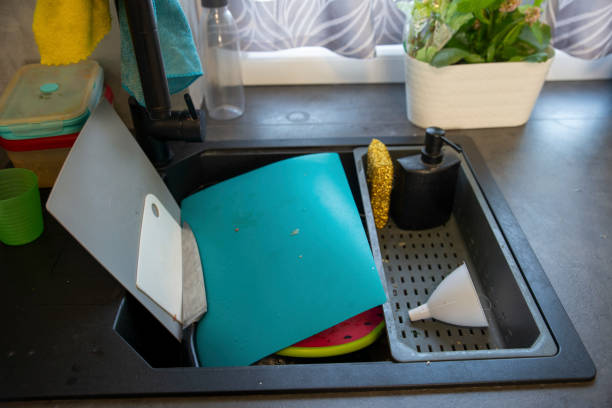If office spaces are not well maintained, they can become unhygienic and unhealthy. It’s no surprise that office spaces can become unhygienic and unhealthy if they aren’t well maintained.
Dr Charles Gerba, a microbiologist and professor in Tucson, Arizona, is an expert on bacteria. Since the 1970s, he has studied the presence of bacteria in the home. Research by Dr Gerba has found a kitchen sink contains more germs than those in the toilet. Sinks and drains are damp and dark, creating the ideal conditions for bacteria and mold to thrive. Bacteria feed on food scraps, crumbs, and other residues from dishes.
Here are a few more examples of bacteria you might find in your kitchen sink or at work.
E Coli
Escherichia Coli bacteria is known for causing food poisoning, urinary tract infection, and pneumonia. Escherichia Coli is a beneficial bacteria that we all carry in our gut. However, certain strains can be pathogenic. They can cause illness through contaminated food and water.
If the sink has come into contact with contaminated food or water, or someone who is carrying the E. coli bacteria has touched the sink, it could contain the pathogenic bacteria. E. coli is often found in office sinks when people don’t wash their hands after going to the bathroom and then use the kitchen area of the office to prepare food or drinks. At least 40 percent of employees do not wash their hands regularly after using the bathroom.
Campylobacter
Another leading cause of foodborne illness is Campylobacter jejuni. It only takes 500 bacteria cells for them to cause disease. Most susceptible are infants and young children. Campylobacter may end up in your kitchen sink if you have exposed it to raw milk, raw meats (especially chicken), unchlorinated tap water, or infected veggies.
Salmonella
Contact with sinks can spread salmonella due to raw meat, contaminated spices, dairy products, or even fresh produce. It can be spread by anything that has come into contact with bacteria. Salmonella can cause nausea, diarrhea, stomach cramps, and muscle pains.
Staph
Staphylococcus Aureus is a common bacteria that can cause skin infections, toxic shock, and food poisoning. Staph is resilient to both damp and dry conditions, so it can survive even in sinks that aren’t used very often.
Staph can be spread by foods that were meant to stay refrigerated but became warm. This is how bacteria end up in your kitchen. Meat, dairy products, and other deli foods are all susceptible. The bacteria can be spread by people coughing, sneezing, or touching an infected area of skin before using kitchen equipment.
What to do to avoid it
A regular and thorough cleaning will reduce the spread of illness. Use hot water with an antibacterial product in the kitchen sink at least twice a week. This is a great habit to develop because it will reduce the amount of food that builds up at the bottom of your sink and prevent drain blockages. To keep up with it, you could use a drain cleaning product about once a week.
Also, it’s important to remind everyone of the importance of proper hygiene and etiquette. Signs about hand hygiene should be posted in bathrooms, while signs in kitchens remind people to clean their mess and to reduce the accumulation of dirt and old food.
A professional cleaner is the best way to keep an office clean, hygienic, and well-maintained. A dirty office can spread illnesses to the entire staff. This lowers morale and productivity.
What’s lurking in your office sink?
Crewcare’s microfibre system prevents cross-contamination between the kitchen and bathroom. We will provide you with a high-quality cleaning service that’s tailored to your needs and at an affordable cost. For your peace of mind and to guarantee a professional and quality job, our staff is highly trained and has been security vetted.

